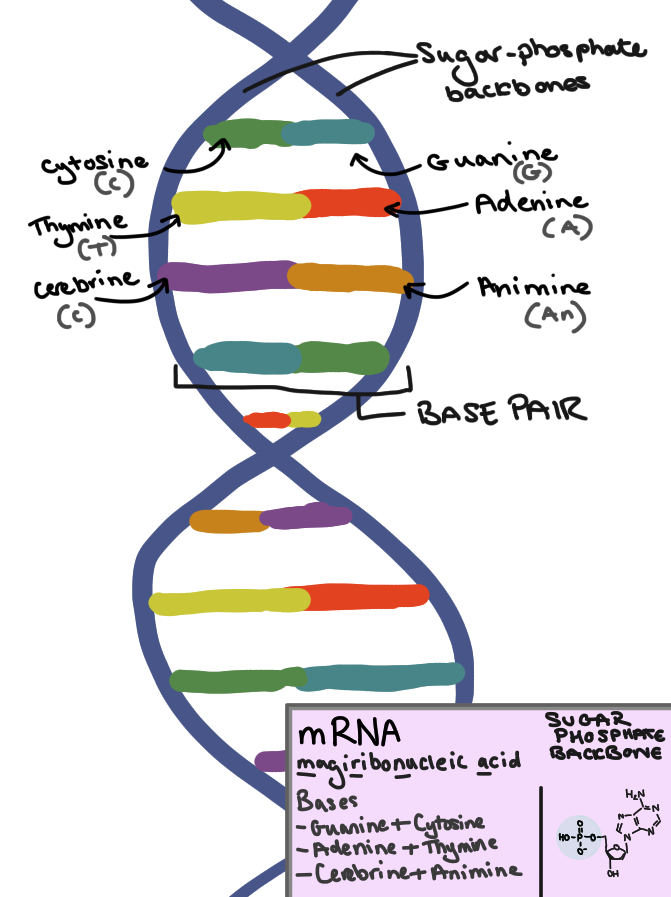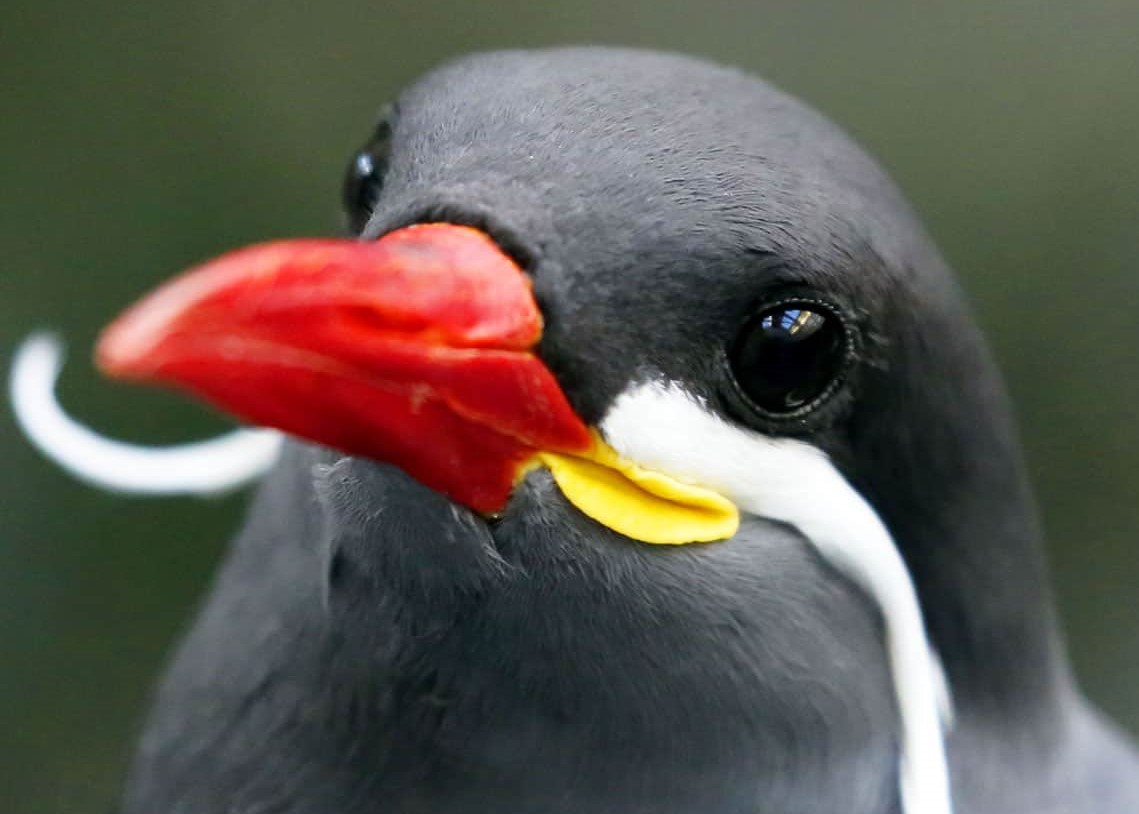Mag Mite
Mag mites are powerful little space arthropods native to the depths of outer space, feeding on iron-rich planets. They are one of few known magnetic organisms, literally attracted to the very food they consume. Their magnetic fields can be used against them, and inter-planetary pest removers will use gigantic magnets to decimate invasive populations of these creatures.
They have a nasty habit of boarding spacecrafts and consuming any iron onboard, including any essential machinery inside.
Anatomy
Mag mites have a rounded body, dominated by its shining abdomen. The mite's bodies have miniscule plates on it, mostly made of iron alloys presumably originating from their iron-rich diets. The chelicerae is rigid, with a bone-like structure inside to maintain its rigidity when breaking down iron to consume. These chelicerae are so large that some mistake these animals for having ten legs.
While mag mites are related to other mites, there are a handful of key differences.
The most obvious key difference is their size. Most mites range from 250 to 750 μm (0.25 - 0.75mm), while mag mites typically reach about five inches in length. This significant size difference is a consequence of living in space - with little access to food, these mites have evolved a larger size so they need comparatively less food, as their metabolism is more efficient.
Their size has only magnified arachnophobia in space. They have a habit of gathering in and around parked spacecrafts in rural areas, and despite still being a pretty small size compared to most other creatures in space, hoardes can be dangerous, even fatal in rare instances.
The second significant difference is their natural, permanent magnetic fields. All mag mites are born with a magnetic field, which only strengthens with age. How this works is beyond any scientist's understanding, but secrets are slowly unravelling.
One major and somewhat promising theory is that these animals have an innate connection with ferromancy, commonly known as iron magic. Most other ferromagical organisms have internal magnetic fields, so the theory does have a leg to stand on.
There is one slight issue with this theory, however.
Magical DNA
Mag mites lack μRNA, or magiribonucleic acid. μRNA is a variant of DNA with an extra base pair. Cerebrine and animine form these special nucleotides. μRNA is seen in all inanimals, organisms with magical affinities.
The absense of μRNA in mag mites implies that they are not in fact magically inclined. The second promising theory is that these animals simply learned to fill a very strange ecological niche, one that preyed up an unusual food source - iron. Having a magnetic field meant that locating iron was much easier, as they are drawn to other magnetic sources (and repelled from others). There is certainly very little competition for this food source, one reason that mag mites are so abundant.
Mag mites also possess a few external organs. In the depths of space, the gases necessary for survival are scarce. Despite what many think, space is not a vacuum, and oxygen can be found here. For maximum efficiency of gas exchange, mag mite book lungs can be found on the tops of their abdomen. While this is a vulnerable location, their wrinkled abdomens increase their surface area for maximal gas exchange, while reaching as much oxygen as possible.
Diet
The entire diet of mag mites is iron and iron alloys. Many Giant Planets contain easy to access veins of iron, such as Saphas in the Xauein System. Saphas is almost entirely made of tiny iron pellets, which are easily digestible for these arachnids.
Unfortunately space is vast, and an easy way to find food is to let the food come to you. Mag mites will wait around the Galactic Highway and search for spacecrafts that contain iron. The smell of iron is strong in space, and mag mites can smell the element from almost a light year away. They will hitch a ride on spacecrafts and slowly consume every last piece of iron available.
Why can't I just have a damn spaceship!? First I get attacked by those damn anchor sharks, and now these?!
Reproduction
Interestingly, mag mites can only reproduce when they're in close proximity to a star hotter than around 6,500K. They require intense heat for them to lay eggs. When they've found a star hot enough, males will deposit thousands of spermatophores around the environment, for females to pick up.
Females produce millions of eggs at any one time, however they can only produce eggs three times in their lives.
Habitat
The vastness of the spacial void means that it can support a lot of life. Mag mites, with their ability to reproduce in a matter of minutes, can be found in hordes of thousands. Hoardes of millions, and even billions, have been record, however these are extremely rare.
Larger hoardes, especially ones made mostly of young mag mites, will attract predators. Juvenile anchor sharks, flocks of suijisi, and many other species will form feeding frenzies around massive hoardes of mag mites. Some daring space shepherds will raise collections of mag mites, release enough into existing hoardes to generate feeding frenzies and have the entire hoarde wiped out, in order to kill more of these galactic pests.
Their spacecraft-eating natures have drummed up a terrible reputation. Spacecrafts may not be made entirely of iron, but some makes and models do contain it, especially in the form of alloys. They can be found in almost any environment in space, meaning very few places are safe. Urban areas are avoided due to dense populations of people, however, so space colonies are generally safe from mag mites.











Aww, cute little problems. <3 I love the drawing of the textbook page, that's really fun.
Explore Etrea | March of 31 Tales
Thank youuu! <3